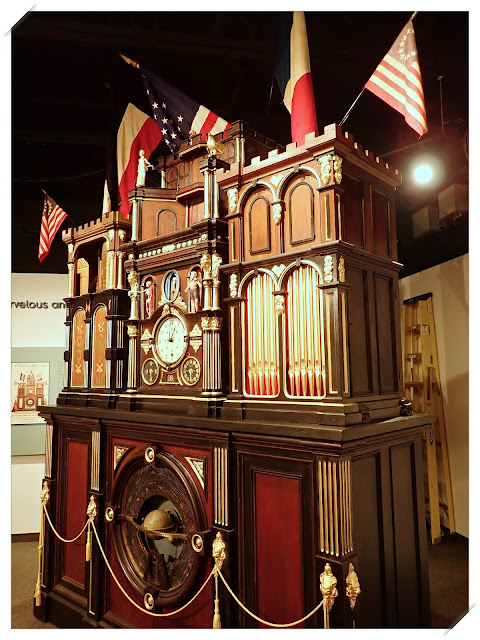Earlier this month, no less than the U.S. federal government has decided that French dressing no longer needs to be regulated. (I did not make this up, honest.)
For more than 70 years, French dressing was the only pourable dressing that had to adhere to standards that require the dressing contain oil, seasoning and acidifying ingredients. And, in case you're wondering, other foods, like bread, jam and juices, also have standards of identity.
This popular orange dressing has had the same ingredients since 1950 when it was regulated under the standard of identity. Ironically, while consumers expect a reddish-orange color and tomato or tomato-derived elements in this dressing, none of these were required under the former standards to identify the dressing as "French."
According to a statement by the U.S. Food and Drug Administration (FDA) When the standard of identity was established in 1950, French dressing was one of three types of dressings we identified, the Food and Drug Administration said in the final rule posted in the Federal Register. The other two were mayonnaise and just salad dressing.
The Federal Register is the official journal of the federal government of the United States that contains government agency rules, proposed rules, and public notices. The Federal Register was created in 1935 by the Federal Register Act to centralize and standardize the public release of information about federal government affairs. It was founded in July 1935.
The FDA's rule on revoking standards for French dressing is a win for the Association for Dressing and Sauces, an industry group that's been around since 1926. The group has been petitioning for the standards set by the FDA to be pulled since 1998, citing an increase in the varieties of salad dressings on the market. The association said that French dressing is "marginalized" among other dressing offerings.
Now, French dressing will no longer need specific ingredients included to be labelled as such and manufacturers can be more creative with ingredients and flavors. Hopefully, not too creative as French dressing is one of my favorites.
The final rule, which will take effect February 14, but according to the FDA won't require manufacturers to change their ingredients or practices which will surely please many.
 |
| Credit: online source |
Did you know that . . .
Some fonts use are ink hogs when printing which means you might need to replace ink cartridges sooner, and some of them can be quite costly, especially now.
Surprisingly, a couple of the worst ink offenders are the most popular, Arial and Helvetica (the font used here). Both are clean, easy to read, and often default fonts, they've been shown to possibly use as much as 20% more ink than similar fonts. Not surprisingly, bold and fancy fonts also use more ink and very big fonts, like Impact, use even more ink.
What to do? When it comes to using a font that can save ink, size matters. The smaller the surface area of the font, the less ink it uses to print. A default font like Times New Roman, is economical as it has thinner letters. Fonts described as thin, condensed or narrow, can mean that the font will need less ink to print.
Some ink-saving fonts have been identified as: Times New Roman, Baskerville Old Face, Courier New, Century Gothic and Calibri. Terms like “thin” or “narrow” are also give-aways that a font can use less ink.
Another tip is to use sans serif fonts (ones without flourishes). This isn't a hard and fast rule as Times New Roman is a serif font, but considered better than most fonts, sans serif fonts or not. (Of course, readability studies have found that serif typefaces are easier to read since added strokes make each character more distinctive which are easier for the eye to recognize.)
Saving ink when printing isn't the only savings. If a font needs more ink, printing takes longer using more electricity which equals more cost. Running out of ink means replacing those cartridges more often. Discarded containers can create plastic and metal waste (as fellow blogger David G. would agree).
Thankfully, this blog doesn't have an ink issue using Helvetica font as it will not be printed out.
If oatmeal bubbles over when cooking on the stovetop/microwave, do you know why?
 |
| Credit: online source |
As oatmeal cooks and the water boils bubbles appear. At the same time, starches in the cereal swell and form a gel which thickens making it difficult for the bubbles to escape. So many bubbles form that oatmeal rises and eventually spills over.
Suggested online remedies included: cooking the oatmeal at a lower power and cooking longer. (This was stated to work for some, but power can vary on some appliances; someone in a hurry doesn't want to add more time. Other suggestions were to add a fat (like butter), lay chopsticks across the pan or bowl, add fruit or nuts — none really worked well. In the end, a few sources recommended stirring more often or a larger pot/bowl to give the oatmeal more room to expand. Stirring the oats distributes the heat and disturbs the bubble. Great if there's time, but you wouldn't use the microwave if not in a rush.
Here's what works for me almost always: following package directions and adding a bit of salt. It just seems to work.
Now, comes the last thing which I've experienced too often and maybe you have as well. (It's OK to admit it here among friends.)
Did you ever enter a room through a doorway and forget why?
Forgetting why you've entered a room is known as the “Doorway Effect” and it happens to everyone, not just those older. In reality, it occurs at any age, any time and on any day.
The Doorway Effect is a widely experienced phenomenon, wherein a person passing through a doorway may forget what he/she was doing or thinking about before entering another room. This is a known psychological event, where changing a location causes a person to forget about something he/she was going to do or retrieve, thinking about, or planning to do.
It's been called a symptom of brain overload. To discover why this happens, researchers conducted a series of experiments using virtual reality. Over 70 volunteers were asked to remember certain objects, like a cone or cross, as they moved through computed-generated 3D rooms. They were asked to walk down partitioned corridors, or watch other people doing the same routine while completing memory tasks.
The studies showed that it's not necessarily entering new rooms or doorways that caused a memory loss, but a sudden and total change of scenery that forced their minds to process something entirely new. For example, researchers say that moving through different floors in a store may not cause a memory lapse, but moving from the department store to the parking garage can cause us to forget something important.
In 2011, a team of researchers at the University of Notre Dame in a paper titled, Walking through doorways causes forgetting, concluded that memory was worse after passing through a doorway than walking the same distance within a single room. It concluded that the Doorway Effect occurs when changing both physical and mental environments, moving to a different room and thinking about different things.
How can you prevent the doorway effect?
A couple of recommendations included: living in an open plan space as no doorways could mean no Doorway Effect. Try to concentrate and pay more attention when entering a different room and imagine making the trip from one place to another
The simplest (and maybe easiest) solution — forget it as it wasn't that important in the first place. And, sooner or later, we usually remember the reason the room was entered.
And, now you might also know some things new to you.
























































